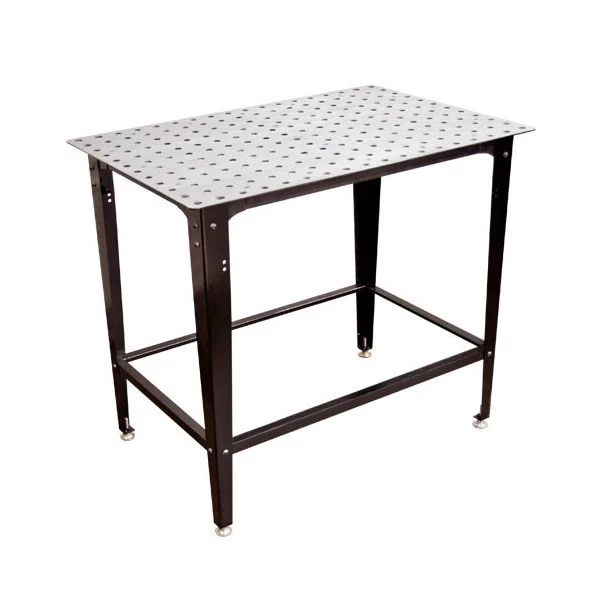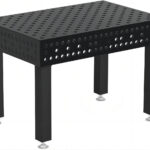Welding tables are a fundamental component of any welding workshop, providing a stable, heat-resistant surface for precise and safe metalworking. Choosing the right welding table can significantly impact the quality and efficiency of your welding projects. This article explores different types of welding tables, their features, and essential considerations to help you select the best option for your needs.
Types of Welding Tables
Welding tables come in various materials and configurations, each suited to different types of welding tasks:
- Metal Welding Tables: These are the most common and versatile types of tables used in welding. Typically made from steel, these tables offer durability and resistance to high temperatures. Brands like KT-Foundry offer customized metal welding tables tailored to specific welding needs.
- Aluminum Welding Tables: Known for their lightweight and corrosion resistance, aluminum welding tables are ideal for less intense welding jobs or when portability is a priority. They are especially useful in mobile welding setups or for educational environments where the table may need to be moved frequently.
- Fabrication and Fixturing Tables: These specialized tables come equipped with various clamping systems and slots for jigs and fixtures, making them perfect for complex or repetitive welding tasks. Welding fabrication tables are essential for precision work, ensuring consistency and accuracy in mass production settings.
Features to Consider
When selecting a welding table, consider the following features to ensure you get the most out of your investment:
- Flatness and Stability: A good welding table must have a perfectly flat top to ensure accurate work. Stability is crucial to avoid any movement during welding, which can compromise weld quality.
- Material Thickness and Heat Resistance: The thickness of the table's surface should withstand high temperatures without warping. Metal tables with thicker tops are preferred for heavy-duty welding.
- Size and Modularity: The size of the table should match the scale of your projects. Modular or extendable welding tables are beneficial as they can be adjusted based on the workspace and the size of the materials being welded.
- Clamping and Fixturing Options: Look for tables that offer flexible clamping systems. This feature is invaluable for securing various shapes and sizes of metal, enhancing both safety and precision.
FAQs About Welding Tables
Q: What is the best material for a welding table? A: While steel is most common due to its durability and heat resistance, aluminum can be a better choice for lighter, less intensive welding tasks.
Q: How thick should the welding table top be? A: A thickness of at least 3/8 inch is recommended for regular welding to prevent warping under high heat.
Q: Can I customize my welding table? A: Yes, companies like KT-Foundry offer customization options to meet specific requirements, such as dimensions, surface material, and additional features like drawers or shelving.
Choosing the right welding table involves considering the type of welding you do, the features that will enhance your workflow, and the material best suited for your projects. Whether you are a professional welder or a hobbyist, investing in a quality welding table from a reputable manufacturer like KT-Foundry can significantly improve the precision, safety, and efficiency of your welding tasks. For more details on our range of welding tables and customization options, visit our website at kt-foundry to explore our products and contact us for your welding needs.




